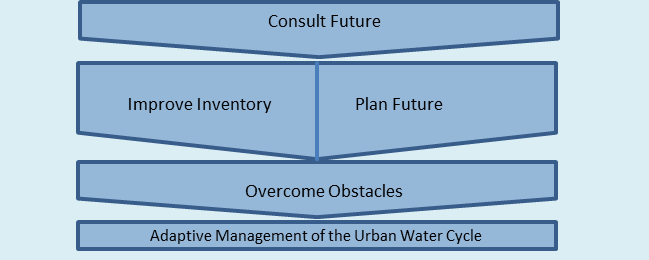
SAMUWA has the goal to support municipalities and their drainage system operators in converting the conventional drainage planning towards an adaptive management of the urban hydrological system. For this purpose, the project is structured in four main topics:
Consult the Future
The urban and infrastructure development will be analyzed in the four pilot areas. On the basis of the gained and already known results a transferable best practice catalog for urban models, taking into account the development of urban drainage systems, is created. Furthermore on the technical level, a stochastic rainfall generator producing spatially and temporally correlated synthetic precipitation time series will be enhanced.
Improve the Inventory
Several project partners develop and optimize technical measures for the quantity and quality-based flow control in sewer systems and their simulation as well as planning solutions to mathematical system optimization in the form of generally applicable guidelines and software. Moreover, in different subprojects a measured data management system is used and further developed in order to manage and check large data volumes.
Plan the Future
The approaches used so far in the urban drainage plannig processes will be extended, taking local water balances and measures of infiltrating water and groundwater management into account. In the field of stormwater management and flood prevention methods of urban design will be linked to the issues of water management by a team of landscape architects and engineers for urban water management. Target is a water-sensitive development of residential areas for people, plants and animals.
Overcome Obstacles
The aim here is to analyze the organization of planning processes and their institutional framework to identify current barriers and on this basis develop adjustment options for an integrated and participatory planning in urban drainage and urban planning. A guide for local authorities and planning actors on governance approaches towards integration of different planning levels, which shows how an integrated and participatory planning strategy may succeed will be the result.

